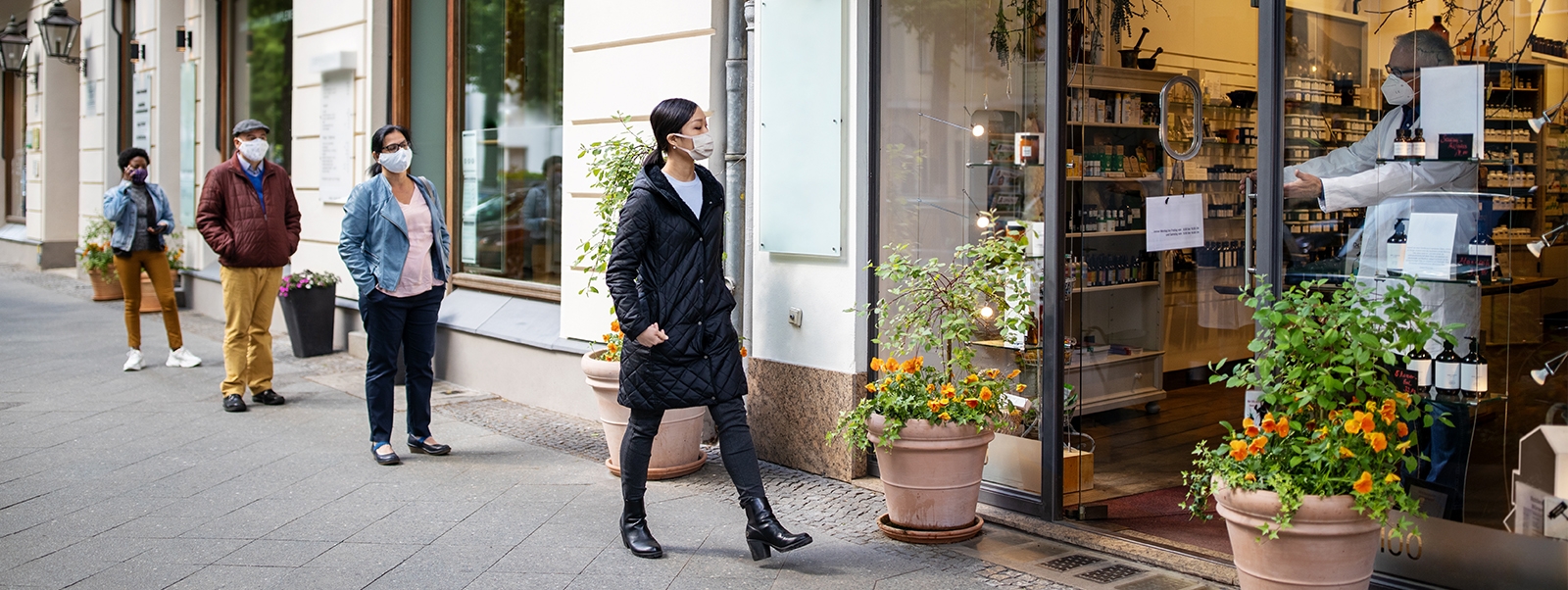This article first appeared in Independent Retailer on November 17, 2020 and is authored by David Mayer.
To continue to thrive, retailers need to address the core of what has changed: convenience. The advantage of being physically closer to the consumer has declined. Take a look at many retail locations: the merchandise carried can be easily found or substituted elsewhere. When that elsewhere includes online, why do customers need to visit?
Yet we feel optimistic about the future, especially in the context of grocery. There are two main priorities to remain meaningful to shoppers beyond the evergreen need to remain price competitive:
- Address the changing nature of convenience
- Ensure that you’re a destination
Address the Changing Nature of Convenience
Around 64 percent of consumers now shop for groceries online, an 18 percent rise from pre-pandemic. Retail has become digital-first even where the physical store is an integral part of the experience. Starbucks has recognized this, reconfiguring stores away from the in-store ordering towards pick-up from smartphone orders. Yet, for many and for good reason, in the past digital operations were established and operated independently from the store network.
Integration is now an imperative for a more convenient experience. Start with the customer and a digital-first mindset, then rethink how the store environment fits into that ecosystem. Compare Amazon’s physical bookstore versus a Barnes and Noble. The role and design of the two stores could not be more different. Walmart introduced its Pickup Tower, lowering last mile costs and encouraging easy replenishment of bulk items while saving time that people can use to enjoy browsing in higher margin categories like health and beauty.
COVID aside, shoppers have shifted from the weekly shopping trip towards a more frequent occasion-based trip. Many do not have the patience to spend over 30 minutes navigating the entire store. Old strategies that placed must-have items in the back of the store cause frustration and churn. Solutions, such as ShopRite’s Fresh to Table, address the need for convenience head-on. Located at the front-of-store, this concept enables shoppers to collect everything they need for a meal within five minutes.
A digital-first offering, combined with the need for shorter trips, also suggests that the current store footprint may need to change. Making the store easier to navigate by reducing the number of different products on shelf means the front-of-house space can be reduced without sacrificing sales. This enables the back-of-house to be enlarged, opening up the possibility for micro-fulfillment, which typically takes up 3,000 to 10,000 square feet. Further, the process removes duplication in cost structures between digital and physical networks, enables picking of digital orders without crowding the front-of-house, and facilitates the faster delivery that consumers crave.
Be a Destination
Convenience is necessary, but not enough. If the majority of your offer can be found elsewhere, you will ultimately lose the shopper to a lower cost provider. It is no surprise, then, that we are seeing an explosion in private label development. Target, Wakefern, and Bed Bath & Beyond have all reinvented their portfolios and moved away from a simple strategy of copying the national brand at a lower price.
This is not just better-designed packaging. It is instituting a research and development pipeline to identify trends, develop flavor profiles, and find suppliers to develop crave-able products not available elsewhere. Pioneered by Trader Joe’s, we are about to see an exciting decade of food innovation. Private label penetration will rise from the mid-teens to the low thirties as a percentage of total sales. Not only does private label create a destination, but it also lowers the price paid while raising bottom-line margin.
An enduring strength of the physical store is its role in discovery. Leaning into that can help a brick and mortar become a destination. Ulta understands this better than most. Enter the store and turn left for easy replenishment of everyday essentials. Turn right and enjoy browsing premium and new finds. This exploration builds connection with the brand and keeps shoppers coming back. In grocery, examples of discovery categories include haircare and alcohol. It is no surprise that Mariano’s, a Kroger brand, has brought these departments earlier in the store navigation and enlarged the role that they play.
All of this takes investment and expertise. For independent retailers, the transformation looks daunting. We are seeing wholesalers such as MDI develop the services at scale, which can provide turnkey solutions to support smaller operators. The bigger question is whether the fierce independence of the owner operator — that made them successful in the first place — can adapt sufficiently quickly to recognize and pivot to the new reality.
Whether a single site or multi-state giant, the imperative for change has never been greater. The need for convenience and destination, all at a competitive price, is not new. But the nature of what this looks like has seen a paradigm shift. The retailers that successfully adapt to how consumers want to shop will thrive, with brick and mortar being a critical part of the equation. To the bold go the rewards.






